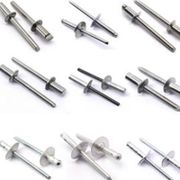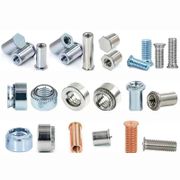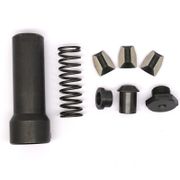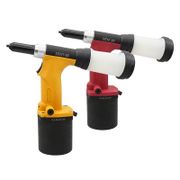🔧 Common Blind Rivet Failures and How to Fix Them
KSEET Special Metal Products Co., Ltd. — 18 Years of Expertise in Blind Riveting Solutions
Blind rivets are widely used in industries like automotive, enclosures, air purification, and electrical lighting due to their simple, one-sided installation. However, certain issues may arise during installation if the rivet type or method is incorrect.
Based on KSEET’s experience serving over 500 industrial clients, here are 8 common blind rivet problems and how to fix them:
1️⃣ Mandrel Not Fully Pulled
-
Issue: The mandrel does not snap off completely, leaving a protruding pin.
-
Causes:
-
Rivet gun has insufficient pulling force
-
Mandrel strength is too high or defective
-
-
Solutions:
-
Check air pressure and tool condition
-
Use rivets with proper mandrel design
-
Choose softer mandrel materials like aluminum when appropriate
-
2️⃣ Loose or Weak Joints
-
Issue: Finished joint is loose or wobbly
-
Causes:
-
Rivet is too short for the material stack
-
Hole diameter is too large
-
-
Solutions:
-
Use rivets with the correct grip range
-
Ensure precise hole sizing (tolerance within ±0.1 mm recommended)
-
3️⃣ Cracked or Deformed Surface
-
Issue: Substrate material is dented or cracked
-
Causes:
-
Material is too soft (e.g., plastic or thin aluminum)
-
Using standard open-end rivets
-
-
Solutions:
-
Use peel-type or tri-fold rivets for soft or brittle materials
-
Add washers to distribute the load
-
4️⃣ Mandrel Falls Out After Installation
-
Cause:
-
Mandrel is not securely locked into the rivet body
-
Poor-quality rivet design
-
-
Solution:
-
Use interlock blind rivets
-
Choose high-quality rivets from trusted manufacturers like KSEET
-
5️⃣ Deformed Rivet Head
-
Issue: Rivet head is tilted or crushed
-
Causes:
-
Improper installation angle
-
Material hardness mismatch
-
-
Solutions:
-
Keep the rivet gun perpendicular to the surface
-
Match rivet materials appropriately (e.g., aluminum-to-aluminum, steel-to-steel)
-
6️⃣ Rivet Doesn’t Set Properly
-
Causes:
-
Hole size is incorrect
-
Rivet gun jaws are worn or slipping
-
-
Solutions:
-
Match hole size to rivet diameter (hole = rivet Ø + ~0.1 mm)
-
Replace worn jaw sets in the rivet tool
-
7️⃣ Rivet Head Breaks
-
Cause:
-
Material fatigue or defective rivet body
-
-
Solutions:
-
Use rivets that meet international standards (ISO, IFI, DIN)
-
Avoid repeated riveting on the same spot
-
8️⃣ Cracks Around the Hole
-
Cause:
-
Pulling force is too high
-
Base material is too thin or brittle
-
-
Solutions:
-
Distribute the load over multiple rivet points
-
Use closed-end rivets or multi-grip types for thin sheets
-
🏭 KSEET — Your Expert Partner for Blind Riveting Challenges
-
✔️ 18 years of fastener manufacturing experience
-
✔️ Full range of blind rivets, rivet nuts, pneumatic/electric/manual tools & accessories
-
✔️ Products meet ISO, DIN, IFI standards
-
✔️ Specialized solutions for sealed, soft material, and irregular joint applications
📩 Contact KSEET Special Metal Products Co., Ltd. today for customized solutions, free samples, and technical support!








